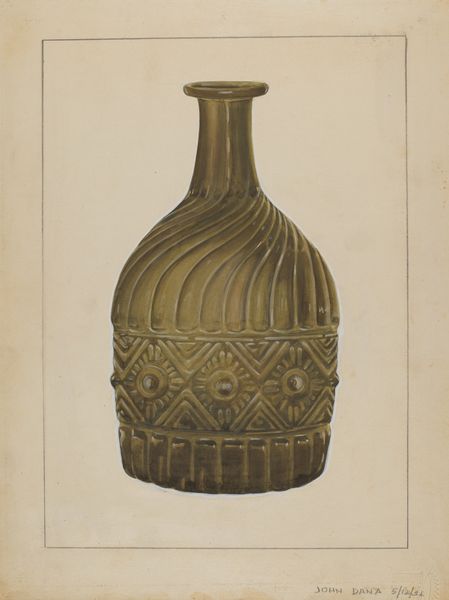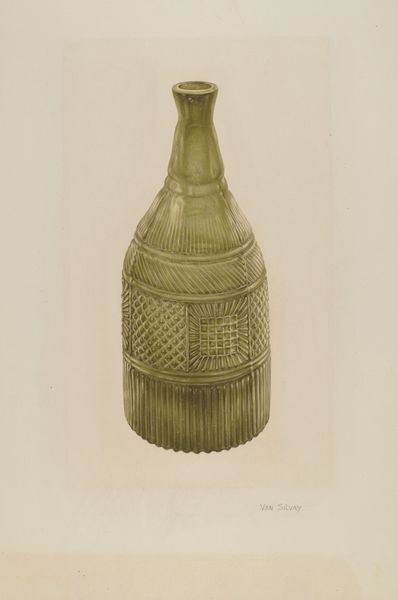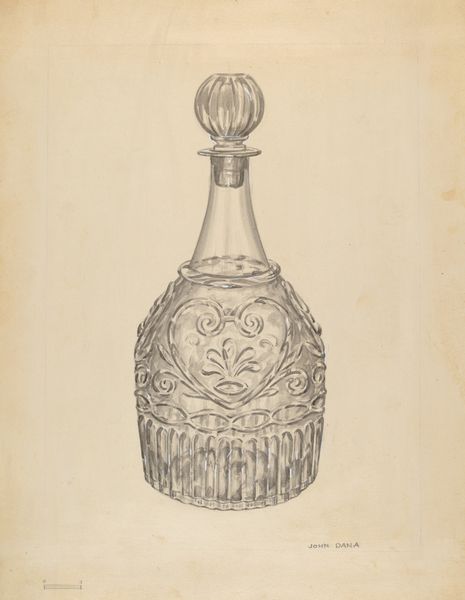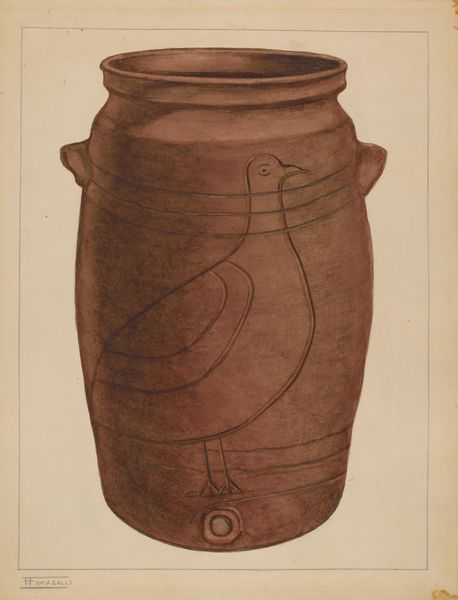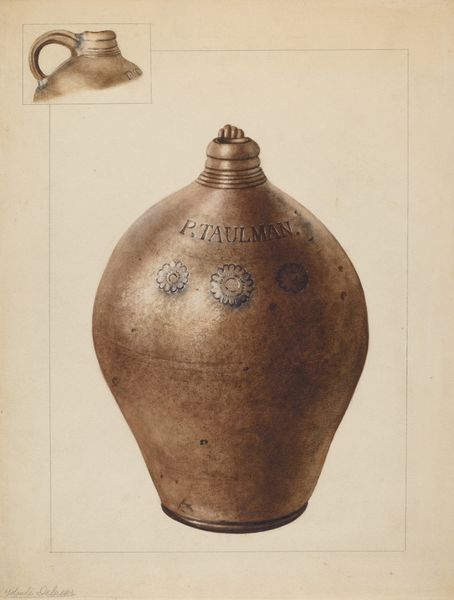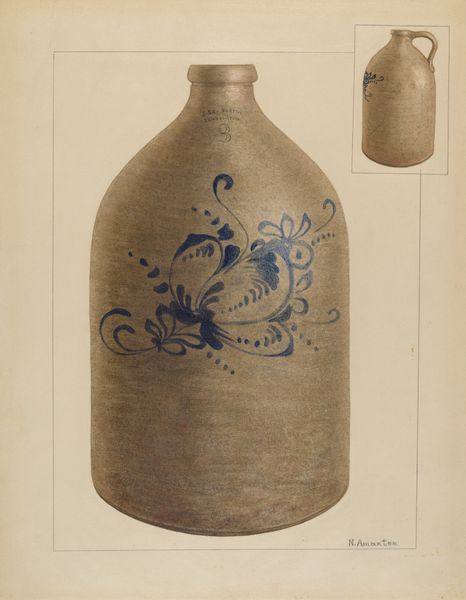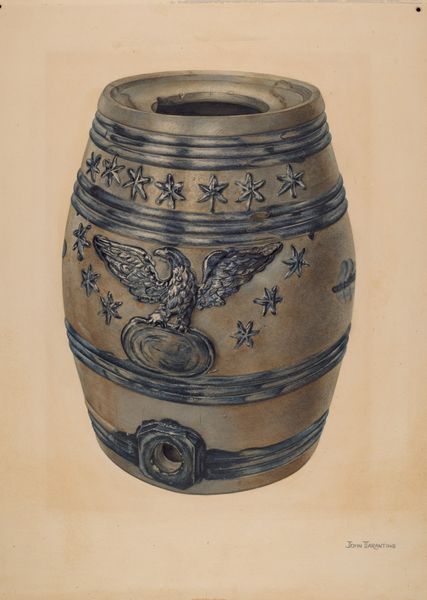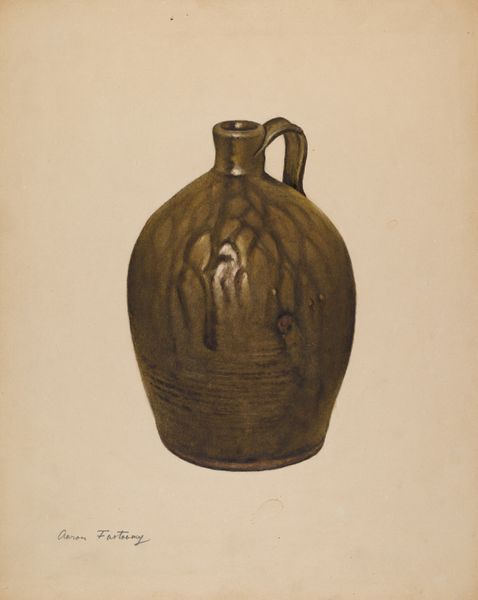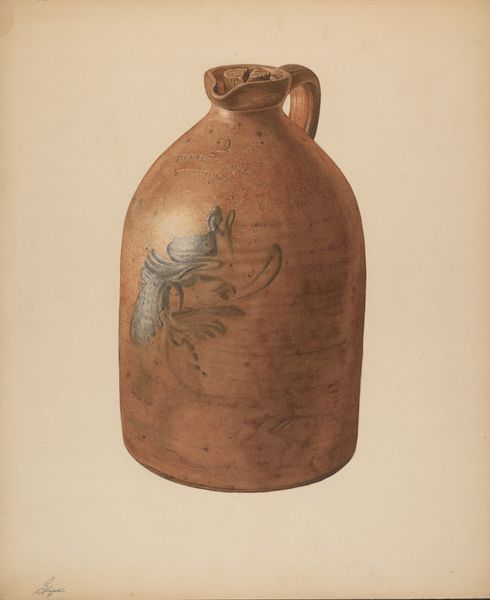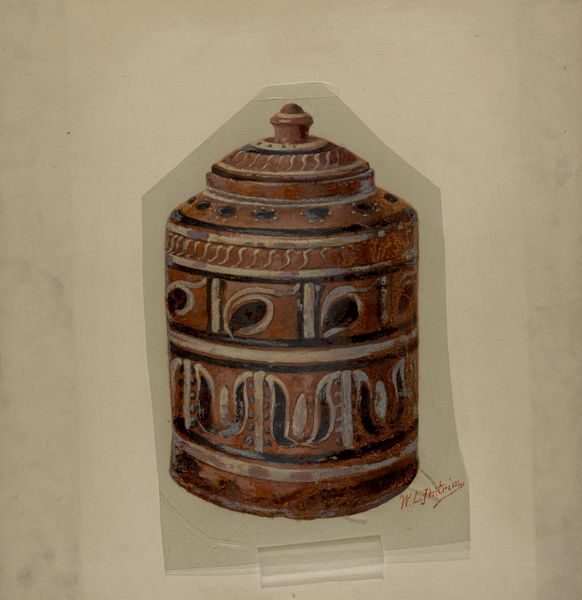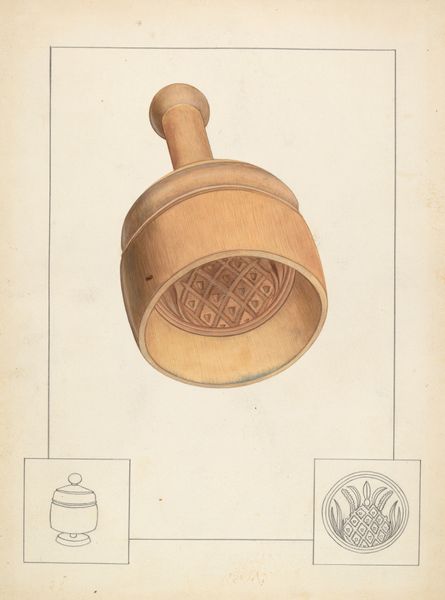
drawing, paper, ink
#
drawing
#
charcoal drawing
#
paper
#
ink
Dimensions: overall: 30.2 x 22 cm (11 7/8 x 8 11/16 in.)
Copyright: National Gallery of Art: CC0 1.0
Editor: This is Nicholas Amantea's "Decanter," a drawing made with ink and charcoal on paper, sometime between 1935 and 1942. It feels quite classical, yet the craftsmanship implied by the detailed design makes me curious. How do you interpret this work? Curator: It’s fascinating to consider the process behind this object, even as depicted in a drawing. A decanter speaks to rituals of consumption, particularly the serving and enjoyment of wine. Was this design intended for mass production? The level of detail suggests a desire to elevate a functional object to something more, perhaps as a symbol of status. What does the chosen material, whether glass or ceramic, signify about its intended user and market? Editor: That's a very interesting take, the labor that goes into manufacturing a decanter...and someone like Amantea taking the time to sketch this is telling. The materials matter! Does the drawing’s medium itself, ink and charcoal, inform how we should see its economic relevance? Curator: Absolutely! Think about the accessibility of these drawing materials in the mid-20th century. Was this design meant to be broadly available, or to appeal to a wealthier clientele who appreciated fine craftsmanship? Furthermore, considering it as a drawing, not the decanter itself, questions the original function as a vessel for wine. The drawing acts as a tool. What were they trying to sell with this design? And to whom? Editor: It's interesting to think of the drawing itself as a form of labor, contributing to the commodification of even simple pleasures. This has changed how I initially thought about it, from just an aesthetic exercise to a study in industrial and material history. Curator: Precisely! The art isn't simply in the object or its representation but embedded in the web of production, consumption, and the social values it embodies. Considering this I realize the implications that industrialization had on design, it transformed more labor intensive designs to fit streamlined manufacturing, I would be very curious to learn if this particular design ever saw a market.
Comments
No comments
Be the first to comment and join the conversation on the ultimate creative platform.
